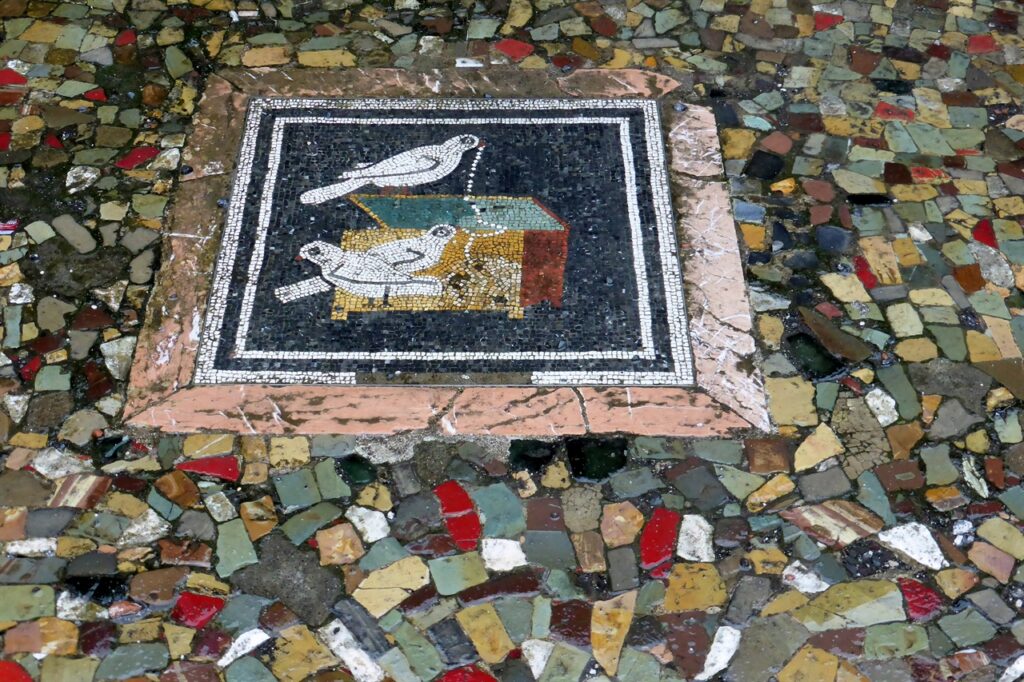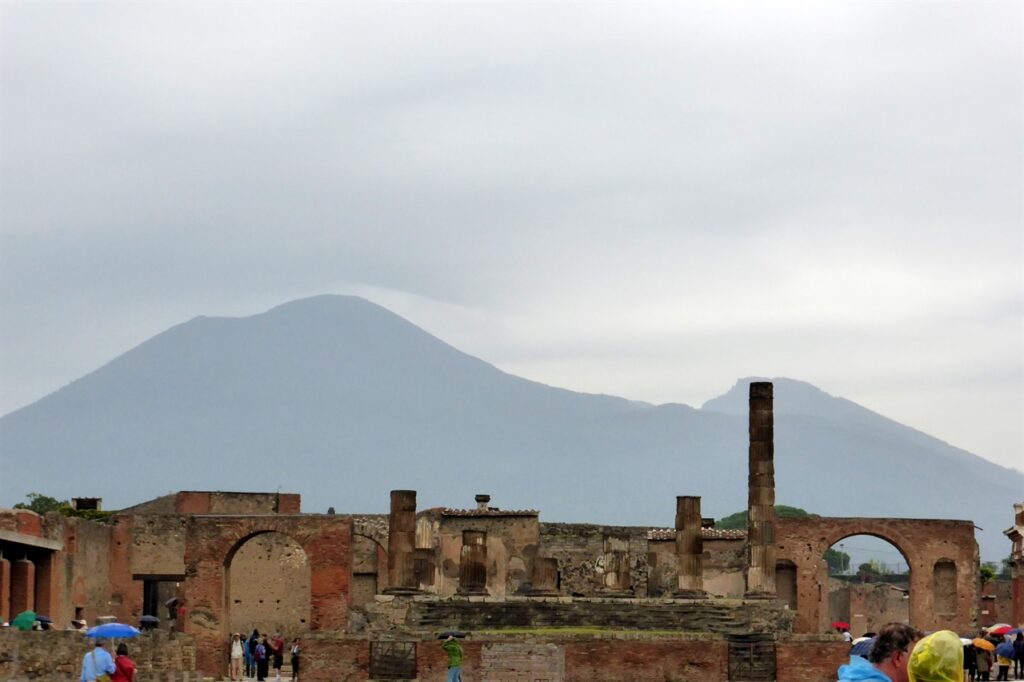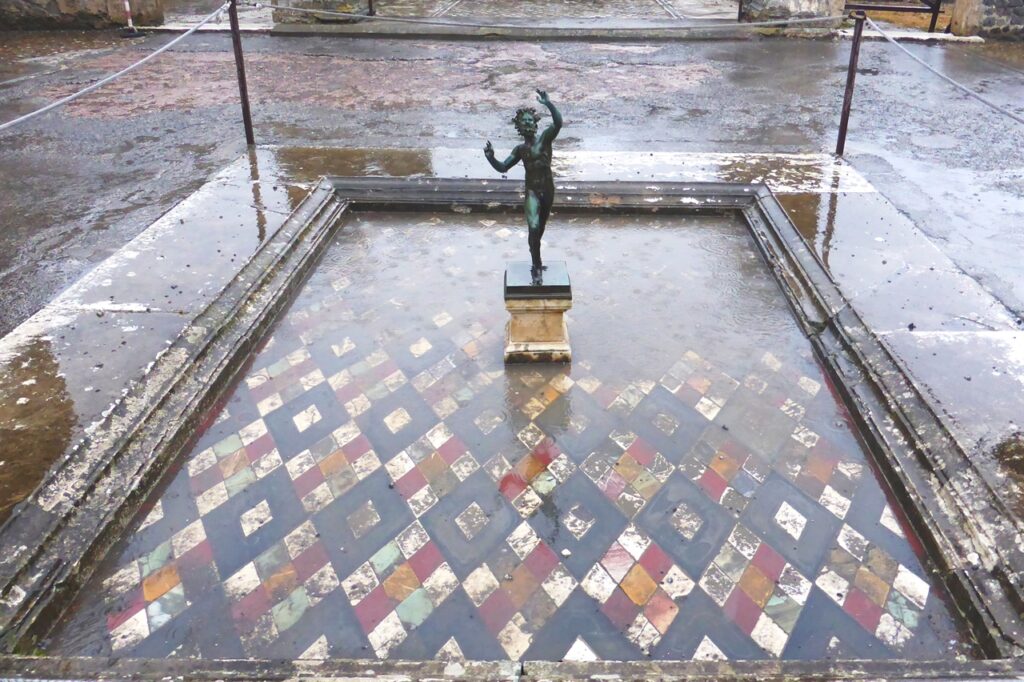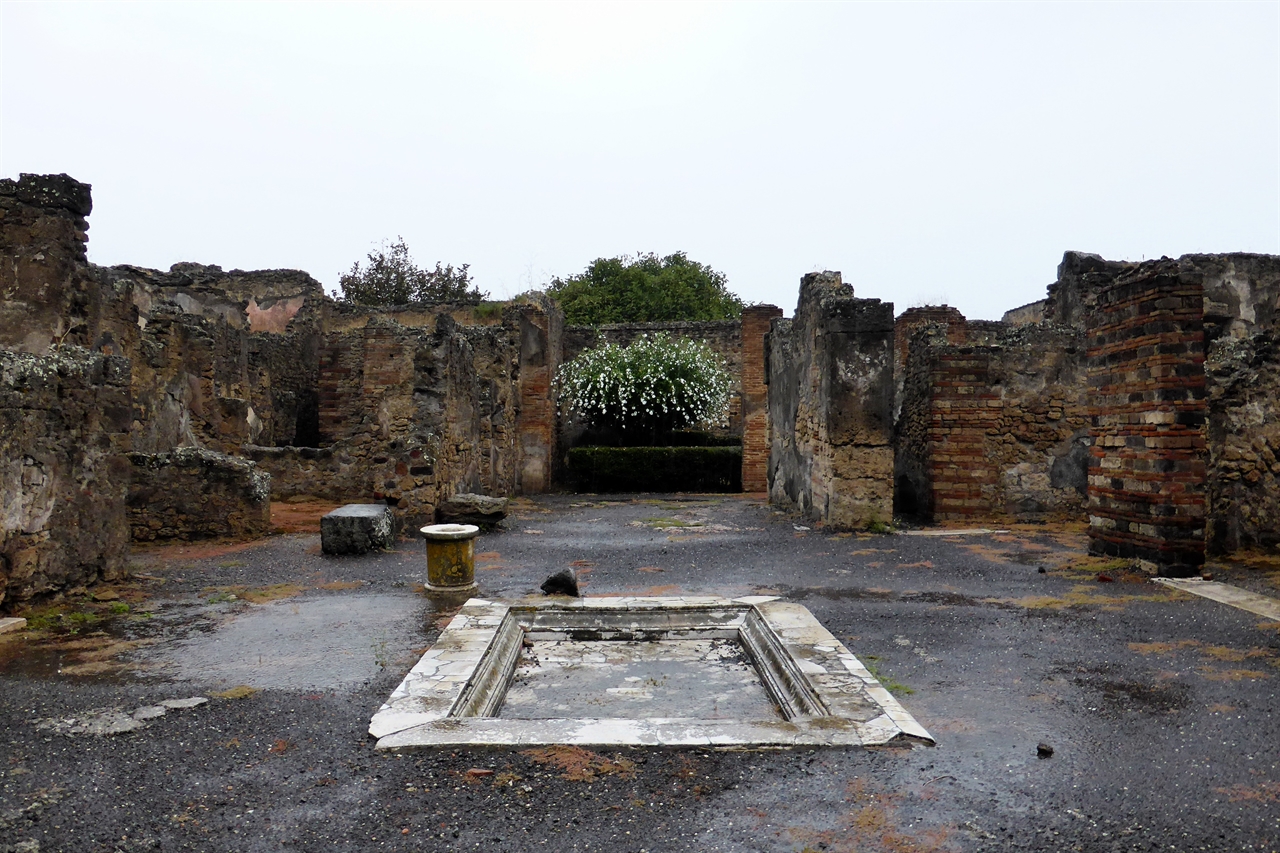Since I was a child, I have been eerily fascinated by the tragic story of ancient Pompeii. A thriving city built in the shadow of Mt Vesuvius until A.D79, when it was suddenly destroyed as the volcano erupted violently. In 1748 a group of explorers re-discovered the remains of the city, and its people. I had seen images of the plaster casts that were taken of the people and animals caught in the last moments of their lives, which brought their story to life in such a vivid way. For as long as I can remember I had wanted to travel to Italy and see the ruined city that was frozen in time by the ominous Mt Vesuvius.

Getting to Pompeii
Staying in Sorrento was a perfect base for our travels around Campania in Italy. When the day arrived for our trip to Pompeii I woke up to the sound of rain gently falling on the balcony outside my bedroom. “Sigh”. It’s only rain, after all. (And I am so used to bringing the rain with me on my travels!! ) So off we went, umbrellas and raincoats in hand, on the half hour train trip from Sorrento to Pompeii. We got off at the Pompeii Scavi – Villa Dei Misteri stop for access to the archaeological site.
A glimpse into the past at Pompeii
This UNESCO World Heritage Site spreads over 66 hectares, of which 49 have been excavated. Reading about Pompeii in books never actually prepared me for the reality of how big the city actually is!


Houses both lavish and humble, shops, thermal baths, temples, theatres, and an amphitheatre spread out as far as the eye can see, all under the looming remains of Mt Vesuvius in the distance.

Thermal Baths


Bakery and Mill


You can see how much of the mountain blew away in the eruption by following the line of the lower slopes to a meeting point above the crater. I was amazed that anything could be left standing, let alone for me to see it nearly 2000 years later.

Frozen in time
Scientists estimate that the volcano rained pumice and ash over Pompeii for about 25 hours. This left the city buried under a layer of debris 6-7 meters deep. The event was sudden and cataclysmic, denying any chance of escape for the residents of the city. The people were entombed where they fell and perfectly preserved for centuries – protected from the effects of both weather and vandalism. The excavation of the city has removed the debris so that we can once again walk the streets of this ancient and touching place.
Visiting Pompeii
Along the way you will find houses with beautiful mosaic tiled courtyards, and cobbled stone streets lined by shops.



Paintings and frescos lined the walls of the buildings, while sculptures adorned their courtyards and gardens.

Many of the haunting plaster casts taken of people and animals are no longer on site in the city, but can be found on display in the National Museum in Naples.
As we see it today
The excavation of the city with its buildings, artefacts and the remains of its inhabitants has provided a great deal of information about daily life in the ancient world. Walking around the city took us most of the day, because of its size. Allow yourself at least 3-4 hours to walk around and see the city.

Pick up the audio tour device because it will tell you the stories of the city. This brings the ruins to life for you.
The Pompeii Archaeological Park is closed on Mondays, so plan your visit accordingly. Check this Train Timetable for the Naples to Sorrento line train times.
[Affiliate Link – If you click the below Booking.com link and make a booking, I may make a small commission at no additional cost to you.]
Related Posts:


I’ve been fascinated with Pompeii since I was a child also. This post is a good resource for when I do get the opportunity to visit.
Lovely pictures Fiona. Brought back so many memories of my own visit. It’s on my agenda again for next year, if all goes to plan.
Thank you for reading! I hope everything goes to plan!